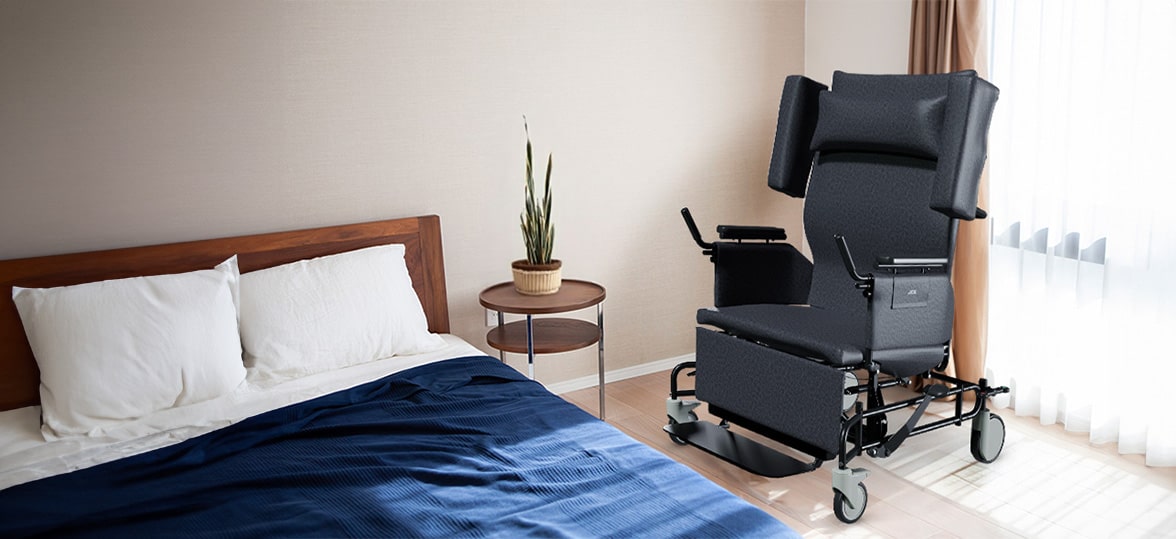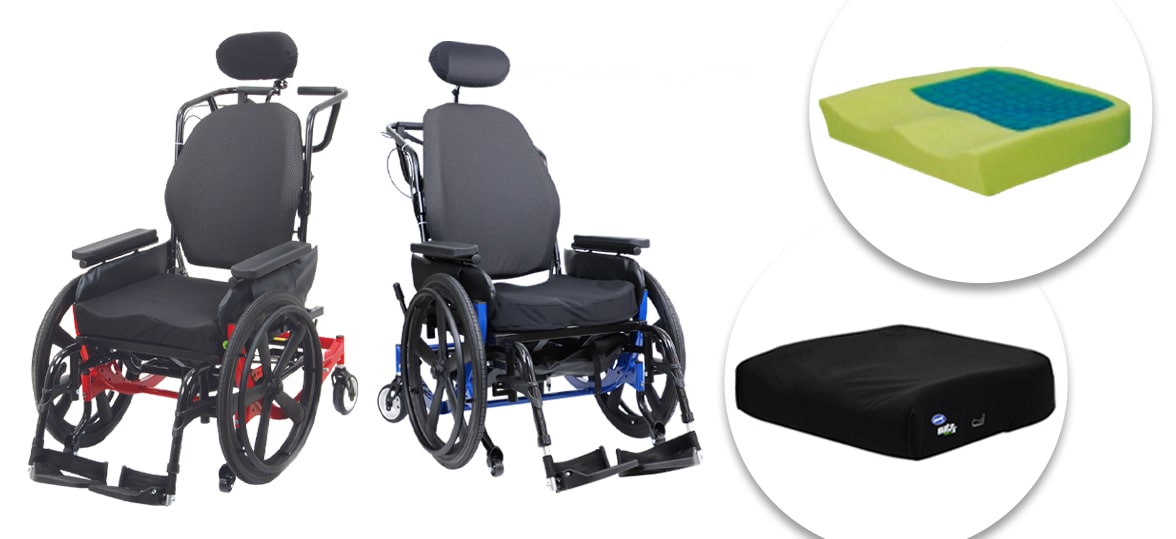Prescribing the right wheelchair for bariatric patients is more than just matching measurements to equipment specifications; it’s about understanding the unique challenges and specific needs of your patient. Variations in body types, weight distribution, and tissue placement mean there’s no “one-size-fits-all” solution, especially when it comes to bariatric care. That’s where Broda wheelchairs shine. Designed with customizable support and advanced pressure redistribution, Broda wheelchairs deliver comfort, stability, and improved posture for patients of all shapes and sizes.
If you’re prescribing for a bariatric patient, the following tips will help ensure the best possible outcomes for your client.
Why Broda Wheelchairs Are Ideal for Bariatric Patients
But before delving into these tips, it’s important to highlight the key benefits that make Broda wheelchairs a trusted solution for bariatric patients:
- Customizable Support: Broda chairs can adapt to a wide range of body types, ensuring personalized comfort.
- Options for Mobility: Broda offers both self-propelled and caregiver-propelled options.
- Optimal Weight Distribution: Broda’s proprietary Comfort Tension Seating system and padding design reduces pressure points and prevents pain or discomfort. Broda also offers customizable seat and back cushion options.
- Enhanced Posture and Pressure Relief: Better positioning minimizes the risk of skin breakdown while promoting spinal alignment and stability.
- Comfort for Extended Sitting: Structurally designed to offer long-lasting support, ideal for individuals spending prolonged periods seated.
With these benefits in mind, let’s focus on how to accurately prescribe the right wheelchair and features to meet your patient’s needs effectively.
1. Understanding Body Type and Distribution
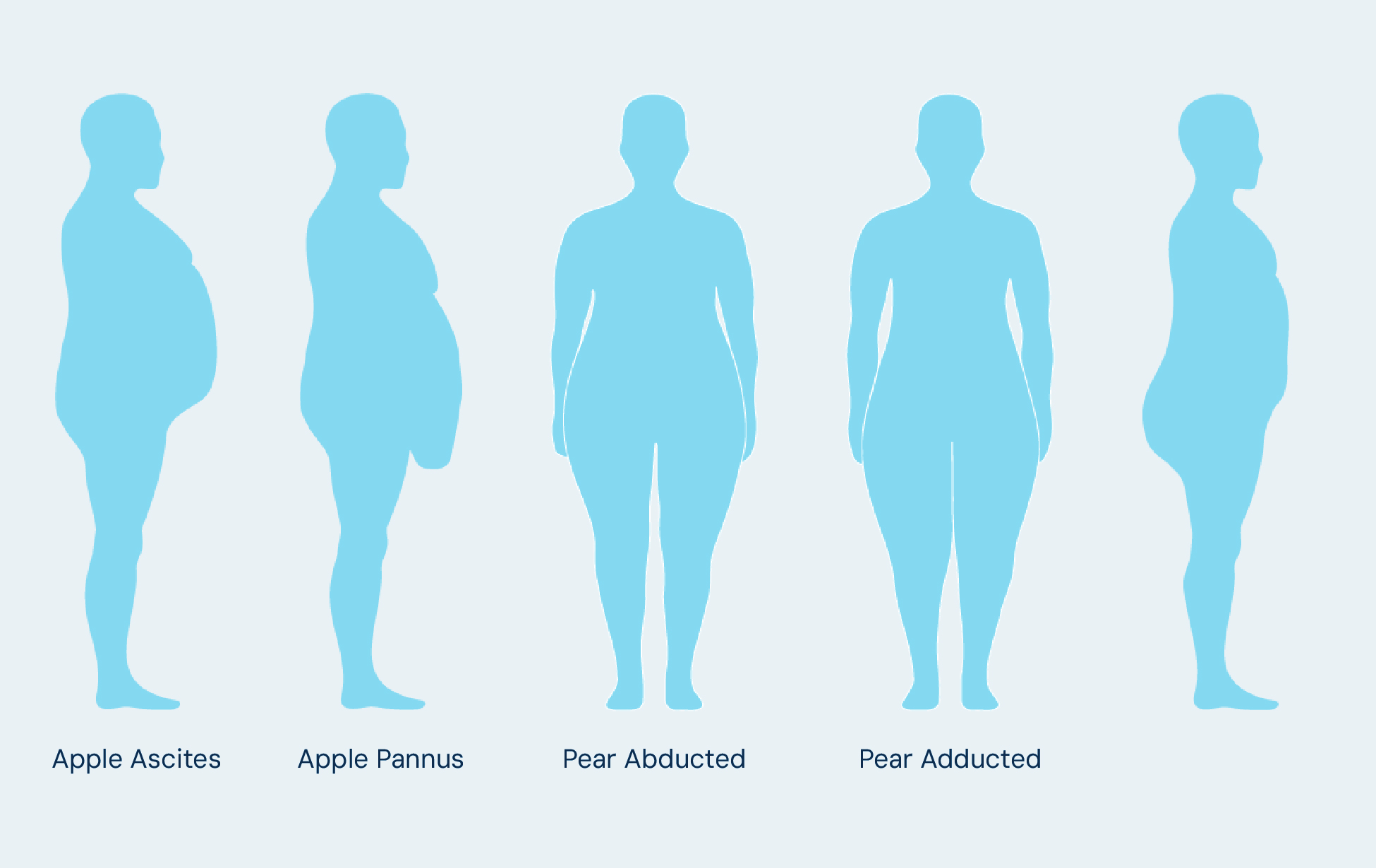
Bariatric patients often present with one of several body types, each impacting posture and wheelchair fit differently. Here’s a quick rundown of common body types and associated considerations:
1. Apple Ascites
- Effect: Patients may not achieve 90º hip flexion due to abdominal tissue, which can push the pelvis forward.
- Consideration: For this reason, caution is advised when attempting to position the hip more neutrally. This could result in forcing the abdominal tissue against the thighs, causing abduction of the lower extremities and may increase the risk of pressure areas. Adjust the seat and backrest to support the pelvis without forcing it forward unnaturally.
2. Apple Pannus
- Effect: Excess abdominal tissue may prevent users from utilizing the full seat depth.
- Consideration: Modifications to the seat pan or cushion depth can ensure the user is supported and balanced on the seat’s surface.
3. Pear Adducted or Abducted
- Effect: Tissue distribution along the thighs (either lateral or medial) requires wider seat surfaces but narrower backrests.
- Consideration: Flexible cushions that accommodate this distribution can improve stability without compromising comfort.
4. Pear Gluteal Shelf
- Effect: Additional tissue at the gluteal region may result in the client not having adequate support.
- Consideration: The measurement from the seat surface to the top of the gluteal tissue can determine the back support height and allow redundant tissue to stay below the back support. It is important that the seat cushion thickness is factored into this measurement to ensure the best possible fit.
Each of these body types requires a tailored approach to weight distribution, support, and cushion design to avoid discomfort or posture issues.
2. Measure with Precision
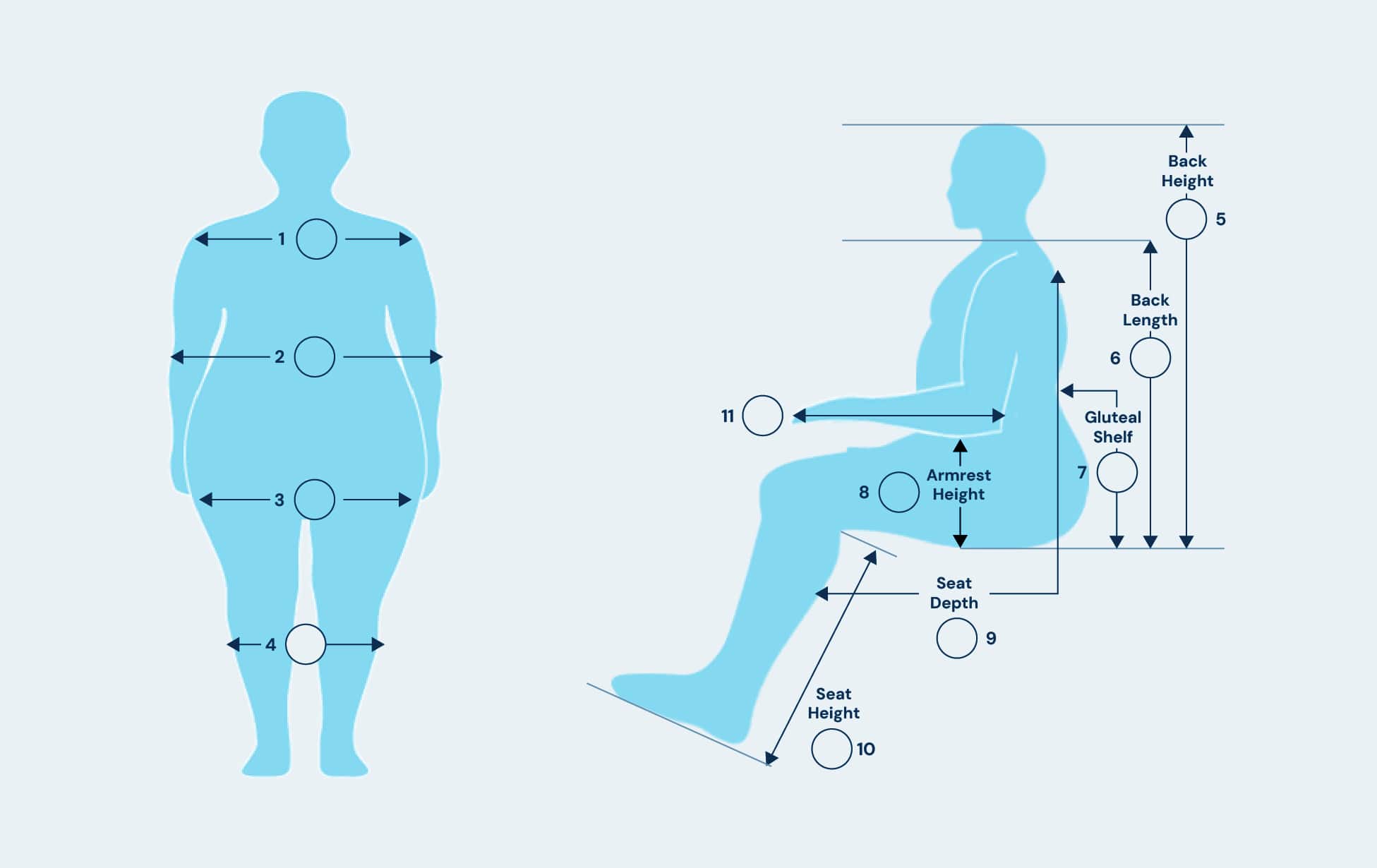
Accurate measurements are critical for fitting bariatric clients. Standard seat width and depth metrics may not fully support your patient’s needs if additional adipose tissue is present. Below, you can find a few measurements that are often overlooked for bariatric patients. It is recommended to take measurements with your client seated on a bed or table.
- Posterior thigh measurements from the posterior aspect of the patient’s knee to the gluteal tissue/fold on the posterior pelvis.
- Posterior aspect of patient’s knee to the posterior aspect of the client’s trunk (superior gluteal shelf).
- From the inferior gluteal fold to the top of the gluteal shelf.
Back Height Considerations
Back support is crucial for bariatric patients, especially those with additional adipose trunk and back tissue.
- Mesomorph Backs: Clients with a mesomorph back shape may benefit from a wheelchair with a narrower seat width and a wider back support.
- Endomorph Backs: Clients with an endomorphic back shape may have large amounts of adipose tissue on the posterior trunk or flanks. This distribution will increase the distance from the back support to the base of the client’s skull/occiput. Choosing wider seat widths and narrower trunk and back supports can address this issue.
- Balance Comfort and Stability: It is recommended to avoid backrests that compress the tissue. Instead, aim for options that stabilize the spine while accommodating curves caused by posterior tissue distribution.
Broda offers an incredible option for accommodating gluteal shelf distributions. Both the Vanguard Bariatric Wheelchair and the Revive Bariatric Shower Commode feature a curved back support for a comfortable and ergonomic fit.
3. Focus on Seat Depth and Cushion Design
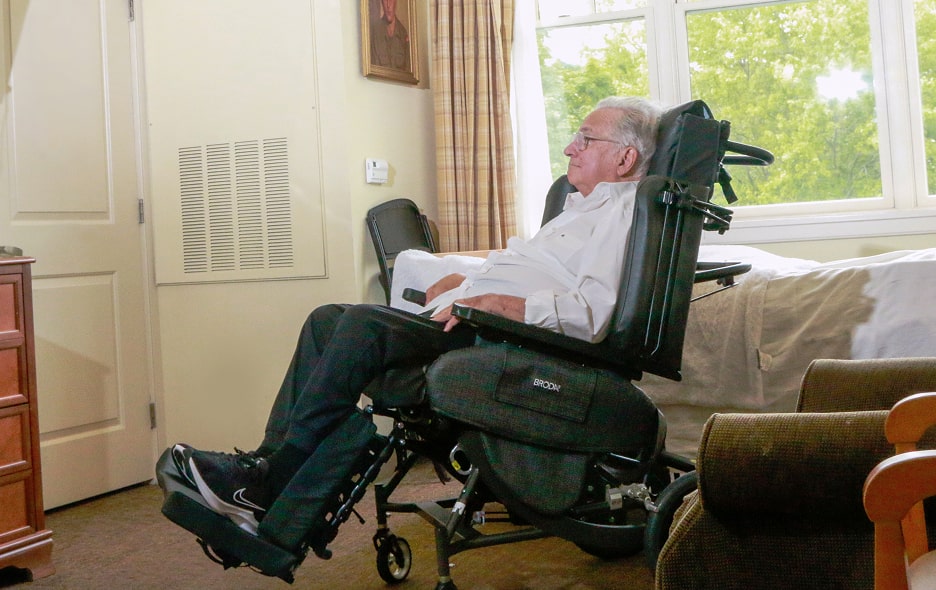
The right seat depth and cushion type can make a significant difference in weight distribution and comfort. For bariatric patients, keep the following in mind:
Support the Femurs
The adipose tissue that forms a panniculus can limit seat depth. A higher-grade panniculus can prevent patients from being positioned further back into the seat. Accurate measurement here is vital to ensuring a comfortable fit. A modified seat cushion can help support the femurs, improve balance, and enhance weight distribution. Broda’s Additional Padding seat cushion is designed with all of these goals in mind.
Accommodate Cushion Thickness
Bariatric cushions tend to be thicker to handle compression. Be sure to choose a cushion that is substantial enough to withstand the weight. Broda offers both Comfort Tension Seating and solid seat pan options.
Broda’s Comfort Tension Seating® (CTS) can be found throughout our bariatric seating range. The strapped seating surface is flexible, allowing the seat to mold to the individual’s shape, but also resists permanent compression in the case of more solid seat pan options. Our CTS straps always return to their original state and never hammock or lose elasticity.
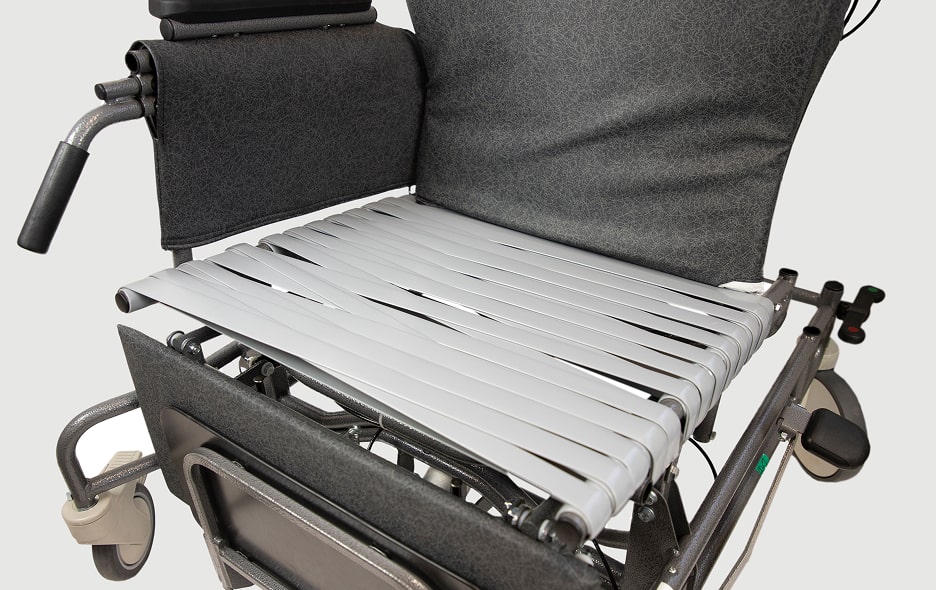
Broda also carries cushions and back supports from the Matrx Seating Series, catering to a wide variety of needs for positioning, pressure reduction, and comfort. Contact us for assistance with an open seating system for a bariatric client!
Avoid Sling Seats
Sling seats lack the structure necessary for bariatric users. Instead, we recommend firm seat options to promote pelvic stability and proper posture.
Ensuring the cushion has pressure redistribution and envelopment properties will also help to prevent shear and skin breakdown.
4. Consider Seat-to-Floor Height
In the case of foot propelling bariatric clients, correct height adjustments can significantly improve a patient’s mobility and overall independence.
A common challenge in bariatric seating, however, is ensuring that the seat-to-floor height accommodates both cushion thickness and foot propulsion.
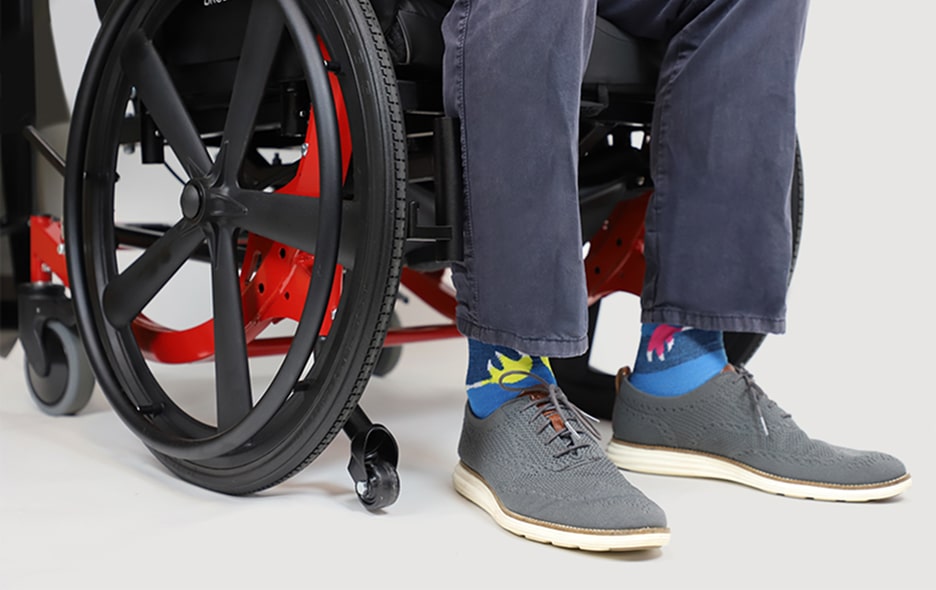
Lower Heights are Better
Thicker cushions can raise seat height, limiting the ability to achieve a proper heel strike. Opting for wheelchairs with adjustable or lower seat-to-floor height can allow for smoother propulsion or transfers.
In the event that use a foam cushion is preferred, but you’re concerned about cushion compression, opting for a wheelchair with adjustable seat-to-floor height can ensure that heel strike and mobility isn’t inhibited during foot propulsion. Broda’s Encore Pedal Wheelchair with the Heavy Duty Package is an excellent option for these more mobile bariatric wheelchair users.
6. Prioritize Durability and Quality
Bariatric patients require wheelchairs that can stand up to consistent use while maintaining structural integrity. Broda wheelchairs excel in this regard, offering long-lasting durability and the highest quality material that prioritizes not just performance but also patient safety.
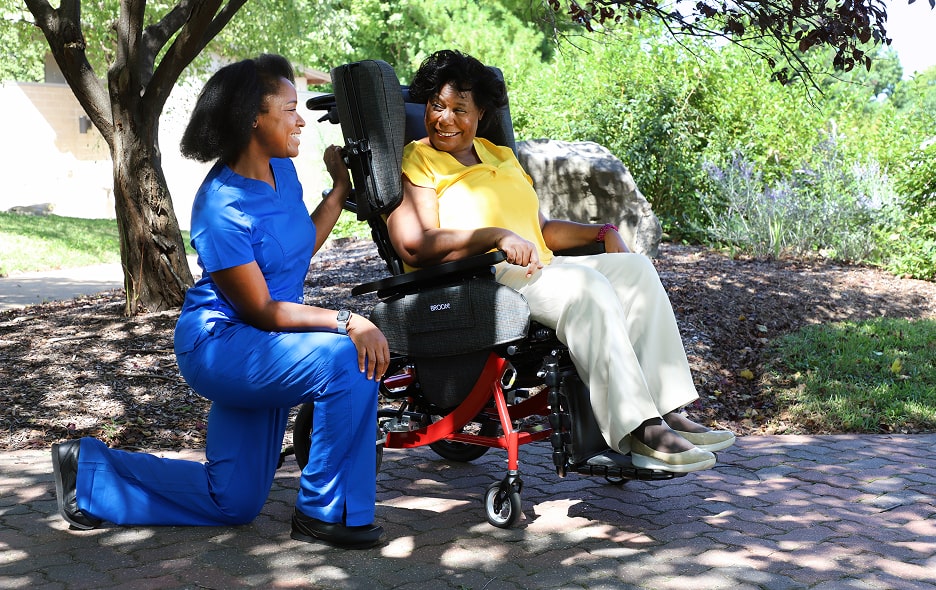
Look for wheelchairs that feature reinforced frames and high-capacity cushions that won’t degrade or sag over time, providing dependable support.
“The Broda Advantage”
Broda wheelchairs are built with bariatric patients in mind, offering solutions tailored to fit individual needs rather than forcing a ‘one-size-fits-all’ model. With customizable features, unmatched quality and support, a Broda chair can play a pivotal role in improving the lives of bariatric clients.
Need assistance prescribing the perfect Broda wheelchair? Contact our team of experts to explore customizable options or request a demo. Together, we can ensure every patient receives the support and care they deserve.
Adapted from Tanguay, S. (2018). Chapter 19: Considerations when working with the bariatric population. In M. L. Lange & J. L. Minkel, Seating and Wheeled Mobility: A clinical resource guide (pp. 317-332). Slack Incorporated.


